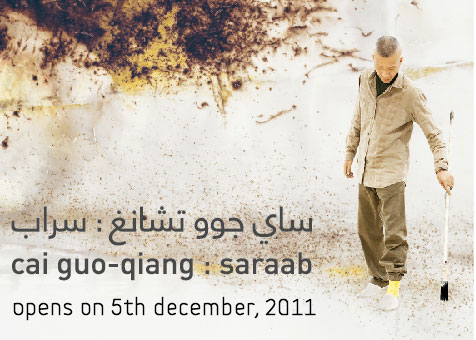
Being comprised of new works that explore the connections between China and the Arab world which can underline the connections between China and the Arab world, Cai Guoqiang's solo exhibition Saraab ("mirage" in Arabic) will be first on view from Dec 5, 2011, to May 26, 2012, at the Arab Museum of Modern Art in Doha.
Featuring the artist's characteristic use of symbols and stories about local history and transnational movements, Cai GuoQiang: Saraab explores the historic and contemporary iconography of the Arabian Gulf and its seafaring culture, as well as the Islamic history of Quanzhou. Works on view also address the ambiguity of Qatar and China's relationships to one another, as well as Cai's own creative development over a lifetime. A millennial and symbolic journey, Saraab questions whether there is something illusory or unobtainable about the process of cultural, temporal and geographic translation.
Since his youth, Cai had been curious about the traces of Islamic influence that can be seen to this day throughout his hometown, including the local streetscape, the grand Ashab Mosque and cemeteries with countless Arabic-inscribed tombstones. Located on the southeast coast of China, Quanzhou was a significant maritime port on the ancient Silk Road and a trade hub for silk, porcelain, tea leaves and spices. The city also hosted some of the earliest Muslim missionaries, now buried in the city's Holy Mausoleum. Saraab offers Cai's perspective on the complex web of conceptual and material connections between China and the Arab world, of dynamics between historic localities marked as much by the passage of ideas and lived experience as by material trade.
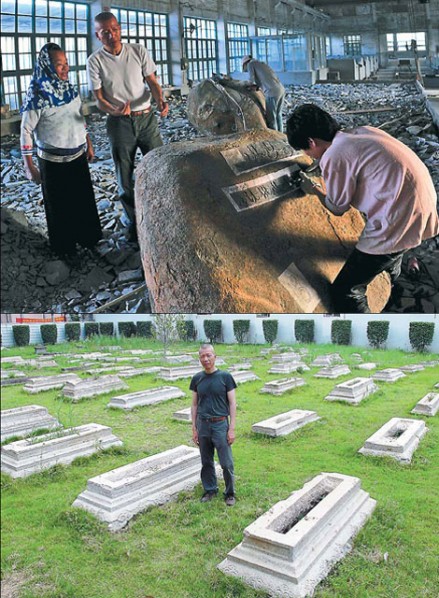
Cai Guo-Qiang on a site visit to a Muslim cemetery in his hometown Quanzhou, China, 2011
"The new commissions reflect my relationship with Arab culture, and draw from the relationship between my hometown Quanzhou with the Arab world",said the artist. "Through the collaboration and exchange with volunteers in making gunpowder drawings and by opening the creative process to the public, I will have the chance to work together with local artists, and discuss how to transform traditional mediums and cultural symbols into contemporary concepts and art forms. The past works and documentary videos on the second floor of the museum form a mini retrospective that attempts to share with the Arab audience my growth as an artist in a multicultural world."
Exhibition Highlights
Among the new works in Saraab is Homecoming, an installation of 60 rocks from Quanzhou, into which Cai has re-carved excerpts of Arabic inscriptions from the Koran and sayings of the Prophet Muhammad that are seen on the Muslim tombstones in his hometown. These boulders will form a winding path from Mathaf's exterior courtyard to the inner atrium and visitors will be able to walk between the rocks, encountering the inscriptions one by one. According to Cai, the journey of the rocks from Quanzhou to Doha symbolizes a homecoming for Muslims in distant lands from the past millennium, offering solace and closure to their long awaited voyage to return home.
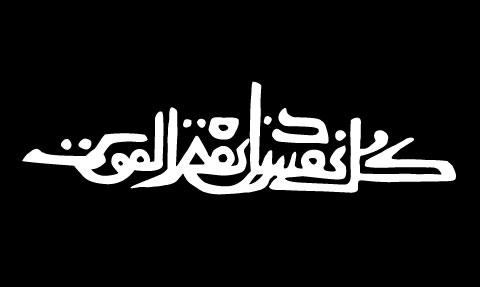
Inscription on tombstone found in Quanzhou, China
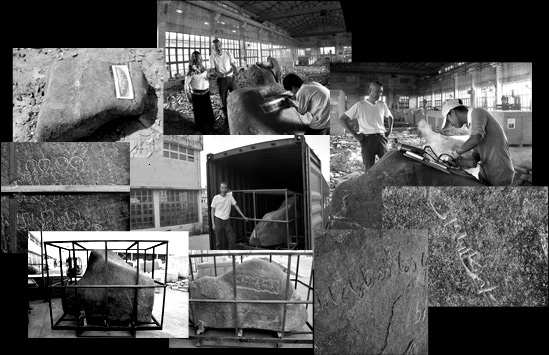
Carved rock, part of “homecoming” at saraab, an exhibition at mathaf 02
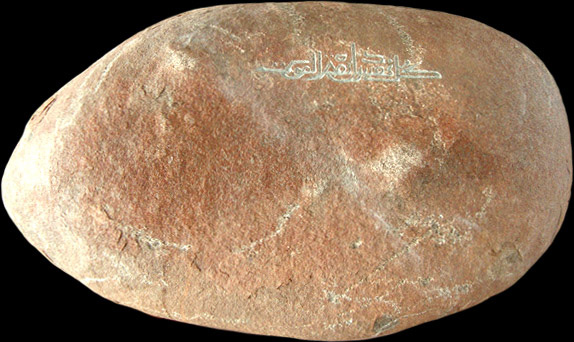
Carved rock, part of “homecoming” at saraab, an exhibition at mathaf
Cai also will produce a number of new gunpowder drawings for the exhibition with the assistance of local volunteers, creating works that trace the maritime route from ancient Arabia to Quanzhou and echo the botanical patterns seen in Islamic decorative art and textiles. These gunpowder drawings provide a symbolic avenue for rebirth or healing, a measured tension between destruction and creation. Documentary video of this creative process and Cai's preparatory sketches for the exhibition also will be shown in Saraab. The works to be produced include Fragile, a unique 18-metre long by 3-metre wide porcelain mural comprised of more than 480 individual panels, marking the first time Cai is incorporating porcelain on a large scale into his work with gunpowder. Select gunpowder drawing events will be open to the public in October and all volunteers will be from the Doha community, a critical element both for the artist'smethodology and the museum'sphilosophy of social engagement.
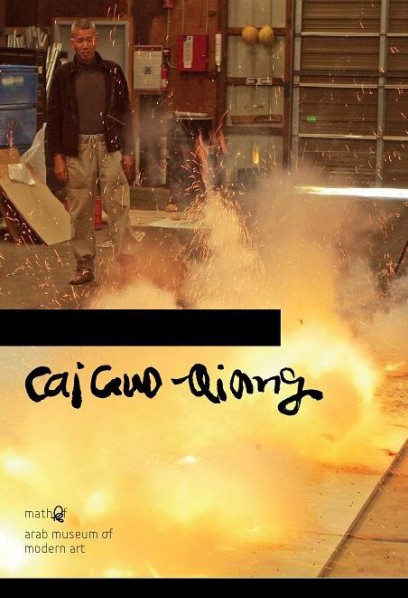

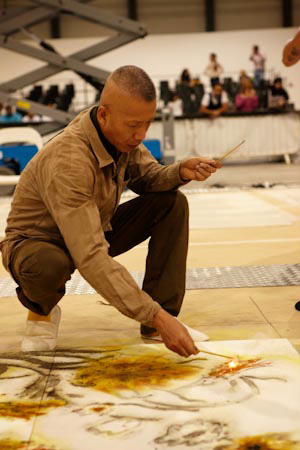
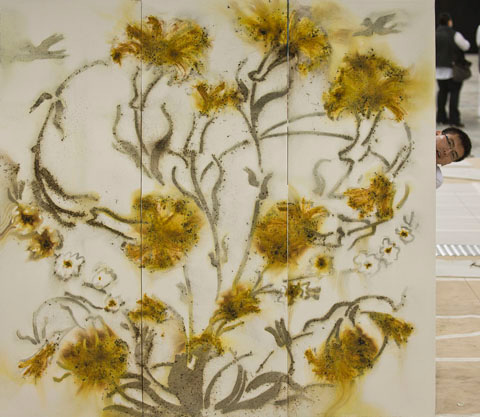
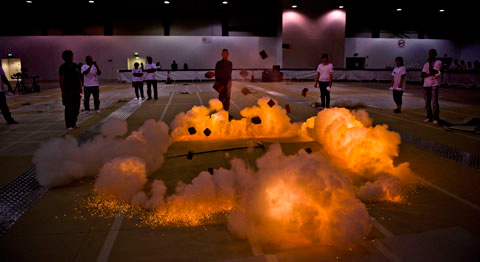
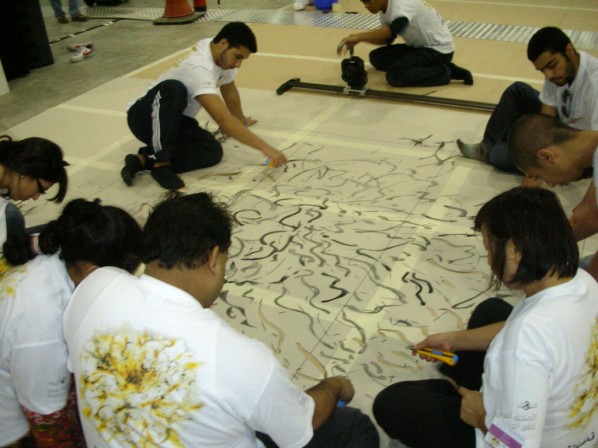
Here are some volunteers making his painting into a stencil.
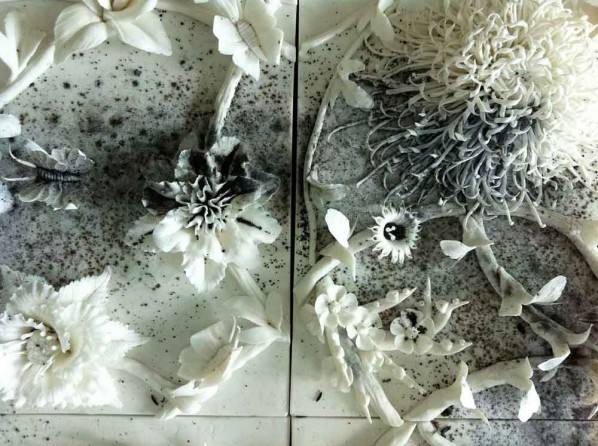
Detail of Cai Guo-Qiang's installation Fragile in production
In keeping with Mathaf's focus on education and broader contextualization, Saraab will include a documentary about the making of other commissioned works in the exhibition, as well as examples of Cai's past work to illustrate his creative process, including experimental tests of gunpowder and fireworks, preparatory sketches, and video projections of the public "performance "of explosion projects and social artworks.
Many featured past works directly link to the newly commissioned pieces, including the documentation of Bringing to Venice What Marco Polo Forgot (1995), a performance and installation piece at the 46th Venice Biennale of a wooden fishing boat from Quanzhou carrying Chinese herbs and ginseng. A conceptual precursor to many of the works in Saraab, this work deals with the transportation of symbolic objects from China, linking the historic Silk Road to contemporary personal, even spiritual, pilgrimages.
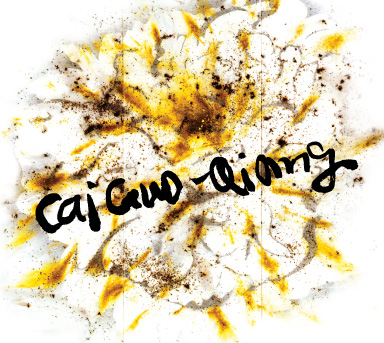
Cai' s handwritten translation of a saying found on old Muslim tombstones in Quanzhou, China.
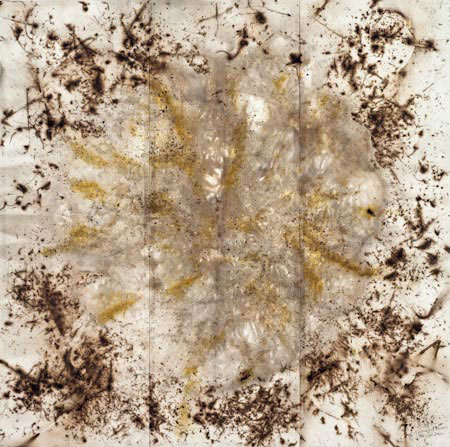
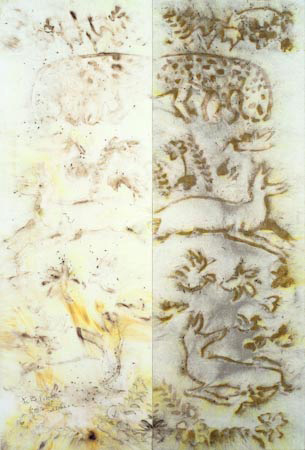
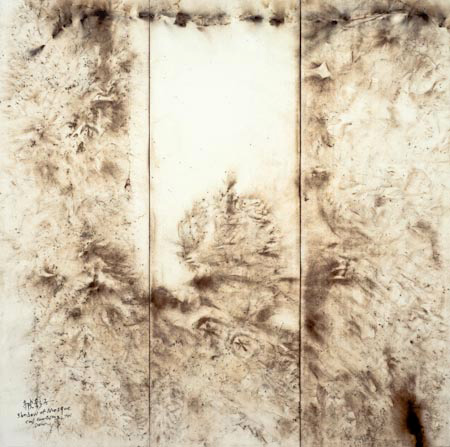
Other documented works featured in Saraab include Footprints of History: Fireworks Project for the Opening Ceremony of the 2008 Beijing Olympic Games that demonstrates Cai's fearless approach to ambitious spectacle, and Man, Eagle and Eye in the Sky (2003), a social art project of painted kites flown in the Sahara Desert that mobilized the local population and was the artist's first engagement in the Arab world.
Courtesy of Cai Guo-Qiang Studio, for more information please visit www.caiguoqiang.com.




























